|
Each foot is made up of 26 bones, 30 joints and more than 100 muscles, tendons and ligaments, all of which work together to provide support, balance and mobility. Here's a look at the main structures of the feet. BonesNearly one-fourth of the body's bones are in our feet. The bones of the feet are:Talus – the bone on top of the foot that forms a joint with. the two bones of the lower leg, the tibia and fibula.Calcaneus – the largest bone of the foot, which lies beneath the talus to form the Show
Top 1: Anatomy of the Foot | Arthritis FoundationAuthor: arthritis.org - 134 Rating
Description: Each foot is made up of 26 bones, 30 joints and more than 100 muscles, tendons and ligaments, all of which work together to provide support, balance and mobility. Here's a look at the main structures of the feet. BonesNearly one-fourth of the body's bones are in our feet. The bones of the feet are:Talus – the bone on top of the foot that forms a joint with. the two bones of the lower leg, the tibia and fibula.Calcaneus – the largest bone of the foot, which lies beneath the talus to form the
Matching search results: Anatomy of the Foot. Each foot is made up of 26 bones, 30 joints and more than 100 muscles, tendons and ligaments, all of which work together to provide support, balance and mobility. ... Tibilias peroneal, which controls movement on the outside of the ankle; Extensors, which help raise the toes, making it possible to take a step; Flexors, ... ...
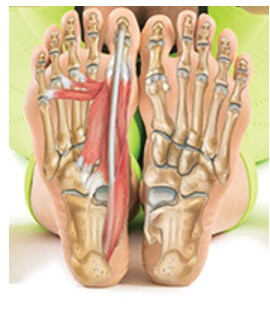 Top 2: Foot and Ankle Anatomy - Bones, Muscles, Ligaments & TendonsAuthor: foot-pain-explored.com - 113 Rating
Description: 3. Foot & Ankle Ligaments. 4. Foot & Ankle Tendons. Find Out More About Ankle Anatomy HomeAnatomy GuideWritten By: Chloe Wilson BSc(Hons). PhysiotherapyReviewed By: FPE Medical Review BoardFoot and ankle anatomy is quite complex. The foot consists of thirty. three bones, twenty six joints and over a hundred muscles, ligaments and tendons. These all work together to bear weight, allow movement and provide a stable base for us to stand and move on.The foot needs to be strong and sta
Matching search results: Sep 29, 2022 · The Hindfoot: the hindfoot comprises of the ankle joint found at the bottom of the leg and is where the end of the tibia and fibula meet the ankle bone known as the talus. It also includes the heel bone, known as the calcaneus. The Midfoot: The five bones of the midfoot are what make up our foot arches. They are arranged in a pyramid shape to be the shock … ...
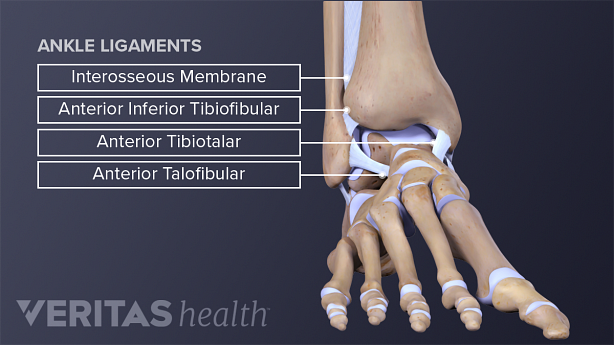 Top 3: Ankle Anatomy: Muscles and Ligaments | Sports-healthAuthor: sports-health.com - 157 Rating
Description: Major ligaments of the ankle. Major muscles of the. ankle There are many different muscles and ligaments in the ankle, which gives the ankle its strength, flexibility, and range of motion.Major ligaments of the ankleAnterior view of ankle ligaments.Ligaments are a type of soft tissue that is made up mostly of collagen.. Ligaments have low vascularity, which means they do not receive much blood flow. This lack of blood flow makes ligaments slower to heal than other types of soft tissue.Unlike tend
Matching search results: The tightening and relaxing of the calf muscles enables the ankle to bend downward and upward. See Common Running Injuries: Calf and Shin Pain. The posterior tibialis muscle, which supports the arch of the foot and enables the foot to turn inward. The anterior tibialis muscle, which enables the ankle and foot to turn upward. 1 Sechrest, R ... ...
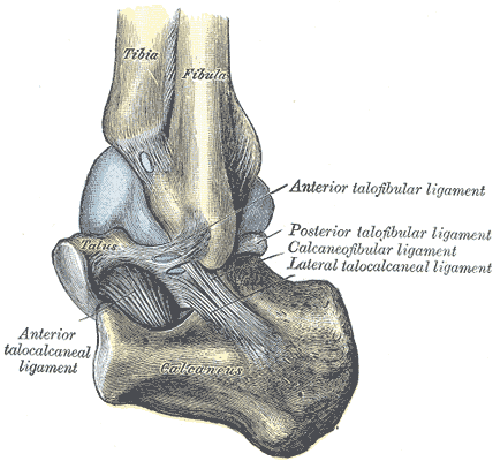 Top 4: Foot Ankle Anatomy, Pictures, Function, Treatment, Sprain PainAuthor: healthpages.org - 126 Rating
Description: The anatomy of the foot is incredibly complex. This introduction to the anatomy of the foot and ankle will be very general and highlight the most relevant structures.The AnkleLateral side of the ankle Joint capsuleThe. ankle joint or tibiotalar joint is formed where the top of the talus (the uppermost bone in the foot) and the tibia (shin bone) and fibula meet. The ankle joint is both a synovial joint and a hinge joint. Hinge joints typically allow for only one direction of motion much like
Matching search results: Jun 29, 2021 · Bones and Joints of the Foot and Ankle The Ankle Lateral side of the ankle Joint capsule. The ankle joint or tibiotalar joint is formed where the top of the talus (the uppermost bone in the foot) and the tibia (shin bone) and fibula meet. The ankle joint is both a synovial joint and a hinge joint. Hinge joints typically allow for only one direction of motion much like a door … ...
Top 5: Foot Anatomy and Biomechanics - Foot & Ankle - OrthobulletsAuthor: orthobullets.com - 137 Rating
Description: Average 3.2 of 71 Ratings. Topic . ImagesPlantar fasciaPlantar fascia (windlass mechanism)originmedial calcaneal tuberosity. insertionbase of the 5th metatarsal (lateral band), plantar plate and bases of the five proximal phalangesfunctionincrease arch height as toes dorsiflex during toe-offmajor (2nd most important) medial arch supportHindfootOverview. consists of articulation betweentaluscalcaneusJointssubtalar joint has 3 facetsposterior facetthis is. the largest facetmiddle facetlo
Matching search results: Question Session⎜Foot & Ankle Anatomy & Foot Deformities (ft. Dr. Daniel Farber) Orthobullets Team Foot & Ankle - Foot Anatomy and Biomechanics; Listen Now 15:32 min. 11/11/2019. 553 plays. 5.0 (1) EXPERT COMMENTS (4) Please ... ...
 Top 6: The Anatomy of Ankle Bones – What You Should Know - Foot VitalsAuthor: footvitals.com - 123 Rating
Description: The ankle joint, or talocrural joint is formed where the foot and leg meet, connecting the tibia, fibula, and talus. This joint allows the foot to move up and down or side to side.The calcaneus is the largest bone in the foot, and it lies under the talus, with which it forms the subtalar joint, which works in conjunction with the ankle joint to allow triplane motion of the foot.The talus works inside a socket, acting as a director to the movements of the ankle. To see how. your talus controls the
Matching search results: Oct 02, 2015 · The ankle joint, or talocrural joint is formed where the foot and leg meet, connecting the tibia, fibula, and talus. This joint allows the foot to move up and down or side to side. The calcaneus is the largest bone in the foot, and it lies under the talus, with which it forms the subtalar joint, which works in conjunction with the ankle joint ... ...
 Top 7: Ankle Anatomy - eOrthopod.comAuthor: eorthopod.com - 65 Rating
Description: A Patient’s Guide to Ankle Anatomy A Patient’s Guide to Ankle AnatomyIntroductionThe ankle joint acts like a hinge. But it’s much more than a. simple hinge joint. The ankle is actually made up of several important structures. The unique design of the ankle makes it a very stable joint. This joint has to be stable in order to withstand 1.5 times your body weight when you walk and up to eight times your body weight when you run.Normal ankle function is needed to walk with a smooth and nearly effor
Matching search results: A Patient’s Guide to Ankle Anatomy Introduction. The ankle joint acts like a hinge. But it’s much more than a simple hinge joint. ... The peroneals (peroneus longus and peroneus brevis) on the outside edge of the ankle and foot bend the ankle down and out. The calf muscles (gastrocnemius and soleus) connect to the calcaneus by the Achilles ... ...
Top 8: Ankle Ligaments - Foot & Ankle - OrthobulletsAuthor: orthobullets.com - 109 Rating
Description: Average 4.6 of 53 Ratings. Topic . ImagesAnkle Joint OsteologyAnkle Jointconsists oftibial plafondmedial malleoluslateral malleolustalus. motion main motion plantar flexiondorsiflexionsecondary motionsinversion/eversionrotationDistal tibiofibular jointconsists ofdistal fibulaincisura fibularis concave surface of distal lateral tibiamotionfibular rotates. within incisura during gaitmortise widens when ankle goes from plantar to dorsiflexionsyndesmosis screws limit external
Matching search results: (OBQ08.33) A 35-year-old man is referred to you for left foot pain after falling from a bicycle. A recent MRI shown in Figure A. The injured structure demonstrated in the MRI will most likely lead to which of the following deformities if left untreated? ...
:background_color(FFFFFF):format(jpeg)/images/library/11040/537_m_lumbricales_fkt.png) Top 9: Ankle and foot anatomy: Bones, joints, muscles | KenhubAuthor: kenhub.com - 119 Rating
Description: Author: Jana Vasković MD • Reviewer: Nicola McLaren MSc Last reviewed: September 28, 2022 Reading time: 12 minutes Ankle and foot (left lateral view)If you’ve watched a documentary film about primates likes chimps or orangutans you may have thought how useful it would be if we could use our. feet the same way we use our hands. Then we could underline our anatomy textbook with our hands, and make flashcards with our feet at the same time.But, evolution has refined our feet to be compatib
Matching search results: Sep 28, 2022 · Ankle anatomy. The ankle joint, also known as the talocrural joint, allows dorsiflexion and plantar flexion of the foot.It is made up of three joints: upper ankle joint (tibiotarsal), talocalcaneonavicular, and subtalar joints.The … ...
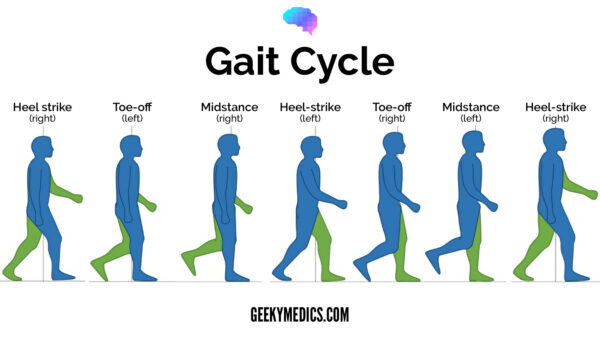 Top 10: Ankle and Foot Examination - OSCE Guide | Geeky MedicsAuthor: geekymedics.com - 105 Rating
Description: To complete the examination…. Closer inspection of the ankles and feet. Metatarsophalangeal joint squeeze. Ankle. and foot palpation. Achilles tendon palpation. Active and passive movement. Passive movement only. Further assessments and investigations. Posterior tibial pulse Ankle and foot examination frequently appears in OSCEs and you’ll be expected to identify relevant clinical signs using your examination skills. This ankle and foot examination OSCE guide provides a clear step-by-step approa
Matching search results: Apr 02, 2022 · The ankle joint and the joints of the feet should be assessed and compared. If the patient is known to have an issue with a particular ankle or foot, you should assess the ‘normal’ ankle or foot first for comparison. Active and passive movement. Active movement refers to a movement performed independently by the patient. Ask the patient to ... ...
Top 11: Anatomy of the Foot and Ankle - OrthoPaediaAuthor: orthopaedia.com - 97 Rating
Description: Anatomy of the Foot and Ankle. Tibia and Fibula (long bones). Transverse Tarsal Joint. Common Ossicles of the Foot. The. Anterior TaloFibular Ligament (ATFL). The CalcaneoFibular Ligament (CFL). Posterior TaloFibular Ligament. The Inter-Metatarsal Ligaments. The 1st MTP joint Capsule of the Great Toe. Anterior Inferior TibioFibular Ligament (AITFL). The Interosseous Membrane. Superficial Posterior Compartment. Deep Posterior Compartment. Muscles within the Foot. The Deep Peroneal. Nerve. The Superficial Peroneal Nerve. Table 1: Joint Function in the Foot.
Matching search results: The foot is traditionally divided into three regions: the hindfoot, the midfoot, and the forefoot (Figure 2). Additionally, the lower leg often refers to the ...The foot is traditionally divided into three regions: the hindfoot, the midfoot, and the forefoot (Figure 2). Additionally, the lower leg often refers to the ... ...
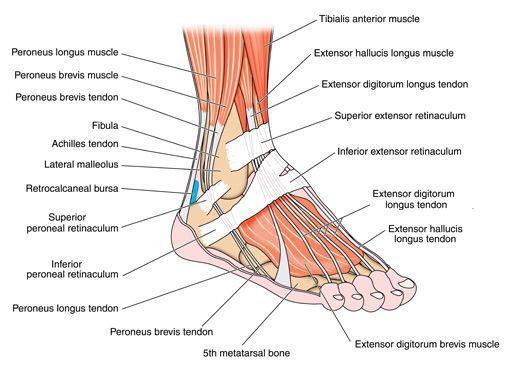 Top 12: Foot and Ankle - SportsMedAuthor: sportsmedalabama.com - 97 Rating
Description: Feet are the foundation of our bodies and play an important part of a happy, healthy lifestyle. The foot is a complex structure that consists of 26 bones, 33 joints, and over 100 muscles, tendons, and ligaments. Its unique design allows the foot to handle hundreds of tons of force every day. The average adult takes 4,000 to 6,000 steps per day. That’s enough steps to walk around the earth four times during your life. When you consider the weight and stress we place on our feet each day,. it’s eas
Matching search results: The foot can be put into three categories: the forefoot (metatarsals and phalanges), midfoot (cuboid, navicular and 3 cuneiforms), and hind foot (talus and ...The foot can be put into three categories: the forefoot (metatarsals and phalanges), midfoot (cuboid, navicular and 3 cuneiforms), and hind foot (talus and ... ...
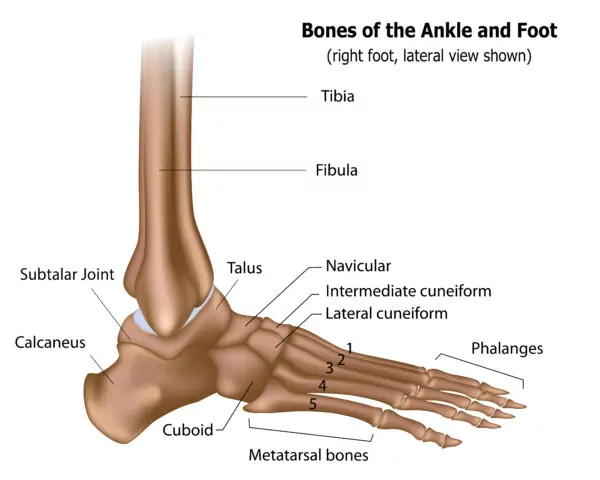 Top 13: The Basics of Ankle Anatomy and Foot AnatomyAuthor: csog.net - 110 Rating
Description: The Basics of Ankle Anatomy and Foot Anatomy. Anatomy of a Joint Structure. Muscular and Tendon Anatomy. of the Ankle. Kristina Hoffmann,. PA-C The Basics of Ankle Anatomy and Foot AnatomyBasic anatomy for any joint structure within the body includes bones, joints, muscles, tendons, and ligaments. For our purposes, we will be discussing Ankle Anatomy and Foot Anatomy structures specifically.Terms to Know:Lateral: outsidePosterior: backsideAnterior:. frontsideMedial: insideDistal: situated away fro
Matching search results: Mar 9, 2022 · The ankle joint is formed where the bones of the lower leg, the Tibia and Fibula, meet the Talus. With this, the portion of the fibula, located ...Mar 9, 2022 · The ankle joint is formed where the bones of the lower leg, the Tibia and Fibula, meet the Talus. With this, the portion of the fibula, located ... ...
Top 14: Foot and ankle anatomy - Patient Education VideosAuthor: ypo.education - 133 Rating
Description: The foot and ankle is a complex joint involved in movement and providing stability and balance to the body. The foot and ankle consists of 26 bones, 33 joints, and many muscles, tendons and ligaments.Bones of the Ankle.The ankle joint connects the leg with the foot, and is composed of three bones: tibia, fibula and talus. The tibia or shin bone and fibula or calf bone are bones of the lower leg which articulate with the talus or ankle bone, enabling up and. down movement of the foot.Three bony bu
Matching search results: Apr 25, 2016 · The ankle joint connects the leg with the foot, and is composed of three bones: tibia, fibula and ...Duration: 6:05Posted: Apr 25, 2016Apr 25, 2016 · The ankle joint connects the leg with the foot, and is composed of three bones: tibia, fibula and ...Duration: 6:05Posted: Apr 25, 2016 ...
 Top 15: Foot and Ankle Anatomy - Bones, Muscles, Ligaments & TendonsAuthor: foot-pain-explored.com - 113 Rating
Description: 3. Foot & Ankle Ligaments. 4. Foot & Ankle Tendons. Find Out More About Ankle Anatomy HomeAnatomy GuideWritten By: Chloe Wilson BSc(Hons). PhysiotherapyReviewed By: FPE Medical Review BoardFoot and ankle anatomy is quite complex. The foot consists of thirty. three bones, twenty six joints and over a hundred muscles, ligaments and tendons. These all work together to bear weight, allow movement and provide a stable base for us to stand and move on.The foot needs to be strong and sta
Matching search results: Sep 29, 2022 · Foot and ankle anatomy is quite complex. The foot consists of thirty three bones, twenty six joints and over a hundred muscles, ...Sep 29, 2022 · Foot and ankle anatomy is quite complex. The foot consists of thirty three bones, twenty six joints and over a hundred muscles, ... ...
 Top 16: A Patient's Guide to Foot Anatomy | 2020 OrthoNorCal, Los Gatos ...Author: orthonorcal.com - 143 Rating
Description: Ligaments and Tendons The important structures of the foot can be divided into several categories. These include Bones and joints, Ligaments and tendons, Muscles, Nerves and Blood Vessels.Bones and JointsThe skeleton of the foot begins with the talus, or anklebone, which forms part of the ankle joint. The two bones of the lower leg, the large tibia and the smaller fibula come together at the. ankle joint.The two bones that make up the back part of the foot (sometimes referred to as the hindfoot)
Matching search results: Jul 6, 2020 · The skeleton of the foot begins with the talus, or anklebone, which forms part of the ankle joint. The two bones of the lower leg, the large ...Jul 6, 2020 · The skeleton of the foot begins with the talus, or anklebone, which forms part of the ankle joint. The two bones of the lower leg, the large ... ...
:background_color(FFFFFF):format(jpeg)/images/library/11040/537_m_lumbricales_fkt.png) Top 17: Ankle and foot anatomy: Bones, joints, muscles | KenhubAuthor: kenhub.com - 119 Rating
Description: Author: Jana Vasković MD • Reviewer: Nicola McLaren MSc Last reviewed: September 28, 2022 Reading time: 12 minutes Ankle and foot (left lateral view)If you’ve watched a documentary film about primates likes chimps or orangutans you may have thought how useful it would be if we could use our. feet the same way we use our hands. Then we could underline our anatomy textbook with our hands, and make flashcards with our feet at the same time.But, evolution has refined our feet to be compatib
Matching search results: The ankle joint, also known as the talocrural joint, allows dorsiflexion and plantar flexion of the foot. It is made up of three joints: upper ankle joint ( ...Ankle anatomy: Movements: dorsiflexion, plantar flexion; Upper ankle joint: inferior surfaces of tibia and fibula, superior surface of ...Muscles of the foot: Movements: foot inversion, foot eversion, toe flexion, toe extension, toe abduction, toe adduction; Dorsal mus...Bones of the foot: Tarsals: proximal (talus, calcaneus), intermediate (navicular), distal (cuboid, cuneiforms) bones; - Mnemonic for ...Joints of the foot: Intertarsal: subtalar (talocalcaneal), talocalcaneonavicular, calcaneocuboid, cuneonavicular, cuboideonavicular, ...The ankle joint, also known as the talocrural joint, allows dorsiflexion and plantar flexion of the foot. It is made up of three joints: upper ankle joint ( ...Ankle anatomy: Movements: dorsiflexion, plantar flexion; Upper ankle joint: inferior surfaces of tibia and fibula, superior surface of ...Muscles of the foot: Movements: foot inversion, foot eversion, toe flexion, toe extension, toe abduction, toe adduction; Dorsal mus...Bones of the foot: Tarsals: proximal (talus, calcaneus), intermediate (navicular), distal (cuboid, cuneiforms) bones; - Mnemonic for ...Joints of the foot: Intertarsal: subtalar (talocalcaneal), talocalcaneonavicular, calcaneocuboid, cuneonavicular, cuboideonavicular, ... ...
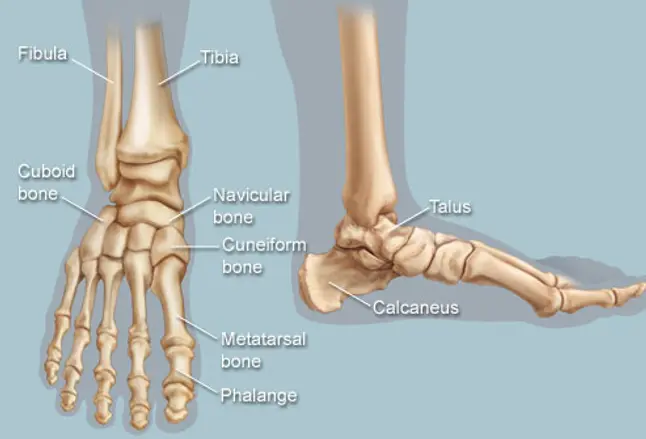 Top 18: Feet (Human Anatomy): Bones, Tendons, Ligaments, and MoreAuthor: webmd.com - 114 Rating
Description: Picture of the Feet . Picture of the Feet Human Anatomy . © 2014 WebMD, LLC. All. rights reserved.The feet are flexible structures of bones, joints, muscles, and soft tissues that let us stand upright and perform activities like walking, running, and jumping. The feet are divided into three sections:The forefoot contains the five toes (phalanges) and the five longer bones (metatarsals).The midfoot is a pyramid-like collection of bones that form the arches of the feet. These include the three c
Matching search results: Jun 23, 2021 · The hindfoot forms the heel and ankle. The talus bone supports the leg bones (tibia and fibula), forming the ankle. The calcaneus (heel bone) is ...Jun 23, 2021 · The hindfoot forms the heel and ankle. The talus bone supports the leg bones (tibia and fibula), forming the ankle. The calcaneus (heel bone) is ... ...
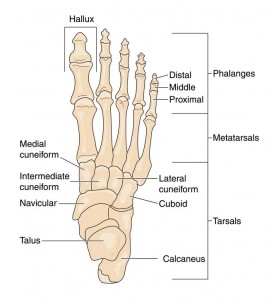 Top 19: Anatomy of the Foot and Ankle by Podiatrist | Denver COAuthor: elitefootandanklecenter.com - 139 Rating
Description: Anatomy of the FootWith our feet under constant stress, it’s no wonder that 80 percent of us will have some sort of problem with our feet at some time or another. Many things affect the condition of our feet: activity level, occupation, other health conditions, and perhaps most importantly, shoes. The foot is an incredibly complex mechanism.The. important structures of the foot can be divided into several categories. These includebones and jointsligaments and tendonsmusclesnervesblood vessels The
Matching search results: The three bones that form the ankle are the fibula, shinbone (tibia), and talus. The fibula and tibia make up the lower leg and their lower edge forms the top ...The three bones that form the ankle are the fibula, shinbone (tibia), and talus. The fibula and tibia make up the lower leg and their lower edge forms the top ... ...
|

Related Posts
Advertising
LATEST NEWS
Advertising
Populer
Advertising
About

Copyright © 2024 boxhindi Inc.


















